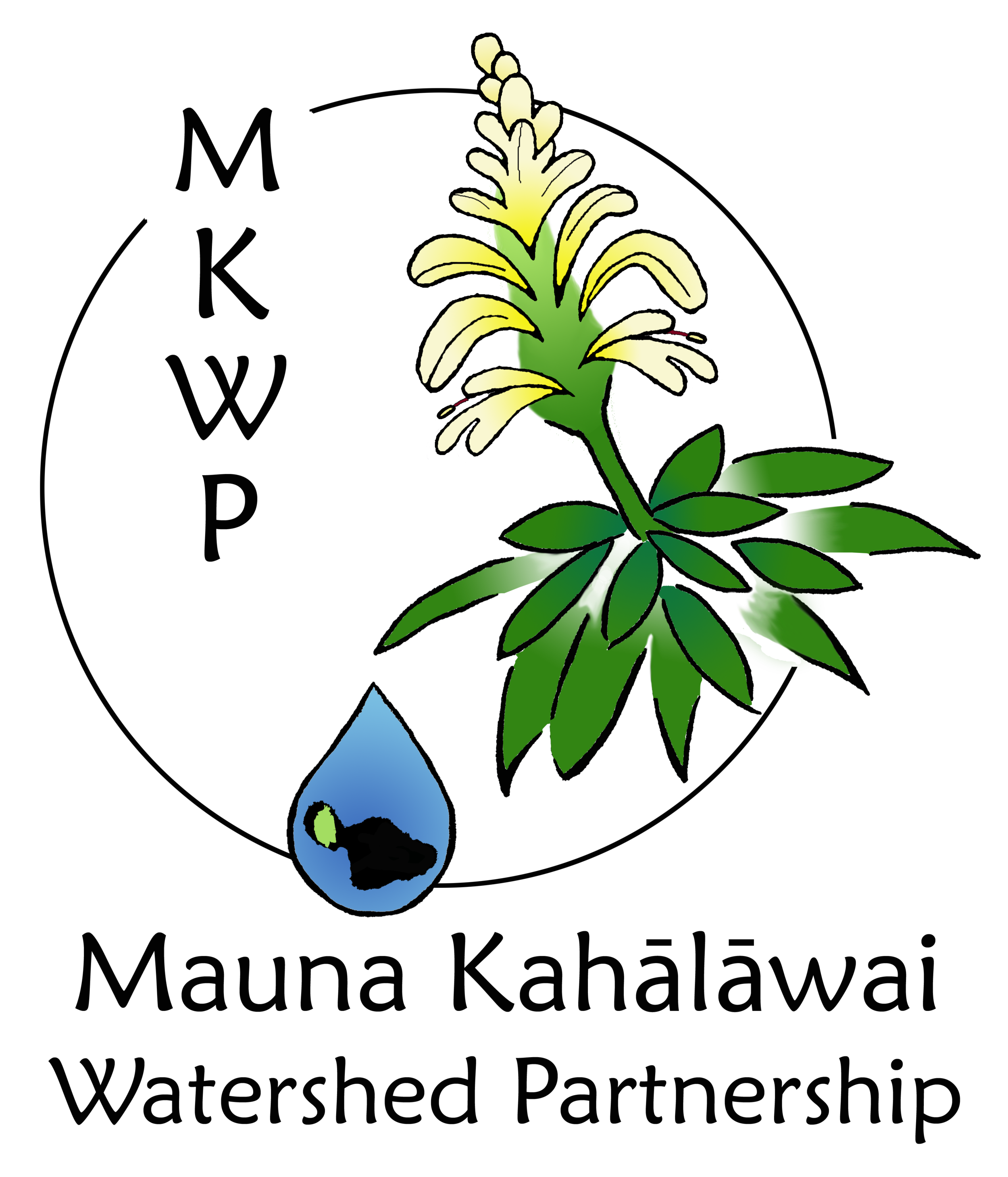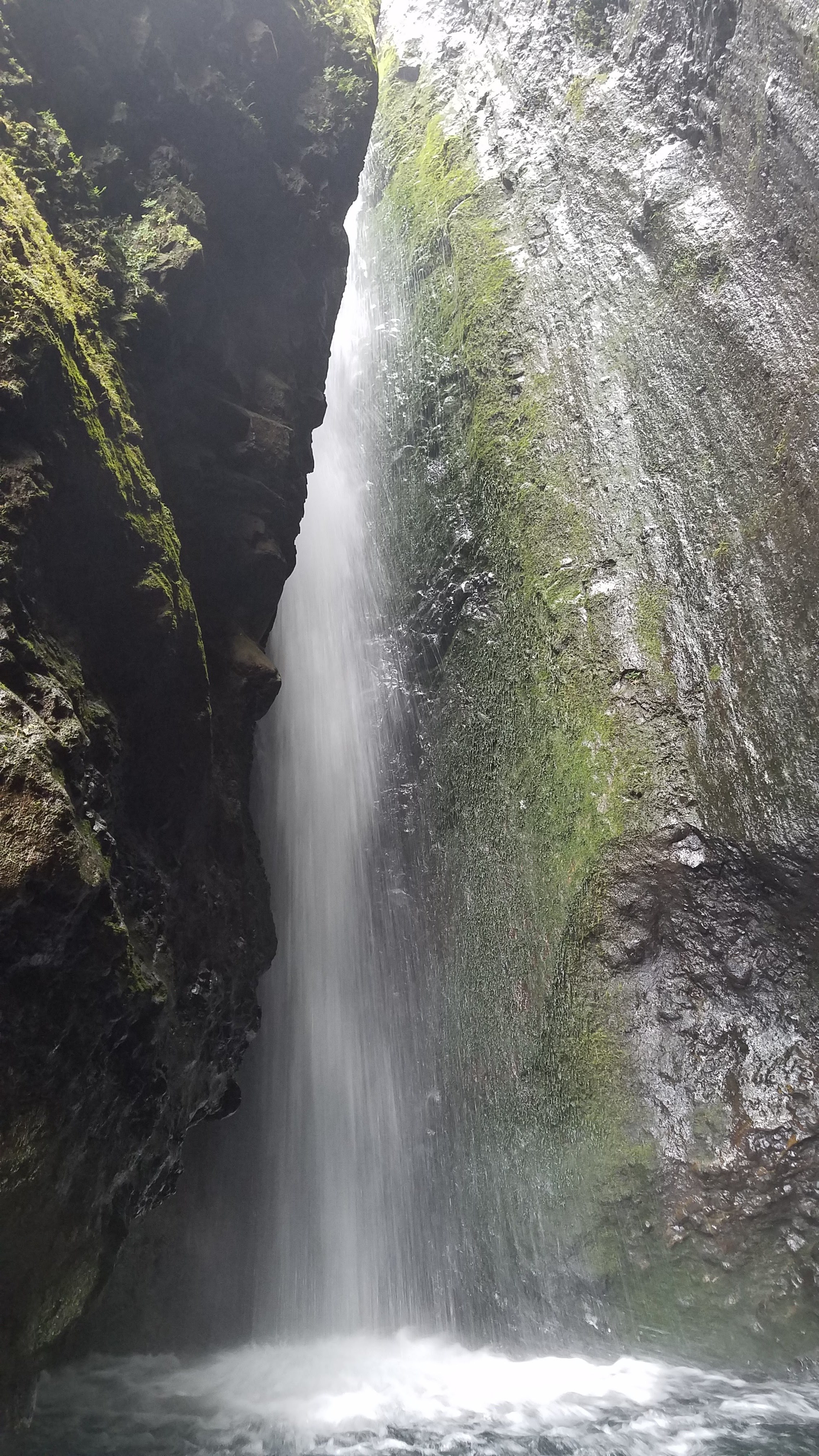
Our Mission
Our Partnership was established in 1998 through a voluntary alliance of state, county, and private landowners in a concerted effort to reverse the negative trend of forest degradation caused by threats like invasive species, human impacts, and wildfire. Our goal is to protect our forested watersheds, native ecosystems, and freshwater supply through collaborative forest management. We have 11 partners and a full-time staff of 11 men and women plus one intern, all based in Olowalu.
We build fences, control invasive species, monitor watershed health, and conduct public education to protect the native forests and watersheds of Mauna Kahalawai, the West Maui Mountains.
Rare, threatened, and endangered flora and fauna have a better chance at survival in these protected areas.
Healthy watersheds are blanketed by healthy native forests. In a pristine native forest, trees, shrubs, ferns, and mosses are intimately intertwined. The many layers of vegetation capture moisture from fog and passing clouds and soak up falling rain. While some of this water gently flows over the surface of the land to be filtered into streams, the underground network of roots helps water percolate down through the soil and recharge our aquifers.
Our forests are home to natural and cultural treasures found nowhere else in the world. While protecting these resources, our work helps to ensure a clean and continuous supply of freshwater for Maui. Where that water goes once it flows out of the mountains is beyond our purview.
“Our goal is to protect the native forests that generate most of Maui’s water supply. Healthy, intact native forests are giant living sponges that provide a sustainable source of freshwater for our island. ”
Why Our Work Is
Important:
The native forests we protect are home to a treasure trove of plants, animals, and insects found nowhere else in the world.
These forests supply the freshwater you drink.
— Chris Brosius, Program Manager
The Partnership
On November 20, 1998, state, county, and private landowners officially formed the West Maui Mountains Watershed Partnership. As part of our 20th anniversary celebration in late 2018, we changed our name to the Mauna Kahālāwai Watershed Partnership.
Watershed partnerships are voluntary alliances of public and private landowners committed to the common value of protecting large areas of forested watersheds for water recharge and conservation values. While the members of the partnership have different priorities, mandates, and constituencies, all share this common commitment.
Our management area encompasses 50,000 acres of forest and watershed lands on the summit and slopes of Mauna Kahālāwai, the West Maui Mountains. Our management priorities include:
1) feral animal control
2) invasive weed control
3) human activities management
4) public education & awareness
5) water and watershed monitoring
6) management coordination improvements
A healthy watershed is a healthy ahupuaʻa.
A watershed is an area of land that collects and drains water to a common outlet like a stream or an aquifer; ahupuaʻa boundaries align closely with watershed boundaries. Damage from human activities and harmful introduced plants, insects, and feral ungulates jeopardizes watershed health. If we mālama our watersheds and our ahupuaʻa, they will take care of us.
The Benefit of Partnerships
With ownership of forested lands in Hawai'i evenly split between public and private landowners, effective conservation cannot be achieved without the cooperation of both. By bringing public and private landowners together around the shared interest of watershed protection, watershed partnerships benefit forest conservation in a variety of ways:
• They exponentially expand our ability to protect forestlands quickly and efficiently.
• They allow for more comprehensive conservation planning
• They enable land managers to construct fences and remove feral animals across land ownership boundaries.
• They make for more efficient use of partnership resources and staff.
• They allow for greater unity in applying for public funding.
• They provide greater access to other funding opportunities.
Guiding Documents
Our work is directed by two partner-approved guiding documents: an overarching Watershed Management Plan and more specific Weed Management Plan.
The Watershed Management Plan details program goals, objectives, actions and budgets necessary to protect watershed resources through the coming years.
The Weed Management Plan operates in tandem with the former to strategize control of priority weed species that threaten the functional integrity of the watershed.





